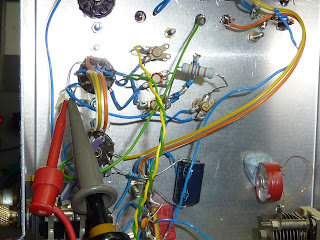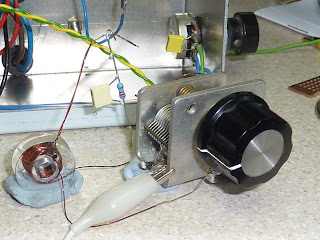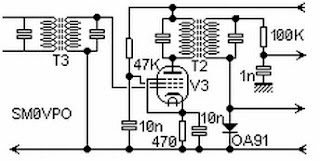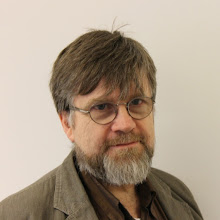I'm taking a break from the valve receiver project (
Blogs passim), to concentrate on a little 40m QRP rig I've been playing with this year - the rig was working but needed some kind of enclosure. Just the sort of job to take my mind off valves & the cold snap which is gripping Manchester at the moment. I need the enclosure to get ready for the rig's debut operation in this year's Winter Sports.
Here's what I produced yesterday and today...
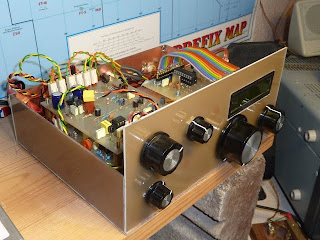
The rig is a development on the excellent "Funster 40", which was my first homebrewed rig. This simple, rock-bound transceiver is featured on
Todd Gale’s excellent website.
I built Todd's little rig when I was a foundation licensee and benefitted greatly from the experience. My version of the Funster 40, seen in the picture below, followed Todd’s “words and music” quite closely, but I added a discrete alternative to the LM386 AF amplifier (which wasn’t in my junk box) using the 2n3904 device Todd views as “the ultimate popcorn part”.

I wasn’t (as I understand clause 7(2) of the amateur license) legally entitled to operate the rig on air until gaining my intermediate license, when I found it to be fun yet frustrating to use.
After a first qso with Billy, m0jha, whose qth is only a couple of miles from the two 2n3904s sweating in the Funster’s 1.5 Watt final stage, I managed qsos with PA and DL stations. After initial elation, the frustration soon set in and the rig was destined for “improvements”. These improvements in no way impute shortcomings to Todd’s original concept – indeed, the transmitter section remains exactly as Todd (and Wes before him) prescribed and the 2n3904 “popcorn” device is used extensively in the rig I now call – in honour of Todd – the “
Funster PLUS”.
I found the frustrations of the original Funster to focus upon two aspects; the rock-bound local oscillator and the receiver.
Being limited to operation on one frequency has its limitations, as I know from operating
my Paraset. However, I had been frightened off liberating the rock-bound Funster by talk of the problems encountered in making stable VFOs. This rumoured difficulty was briefly supported by some of my early experiments with Colpitts oscillators but immediately dispelled when I built a copy of the VFO designed by Roy Lewallen, w7el, for his “
Optimized Transceiver”. This circuit, which uses the Hartley oscillator architecture, immediately gave me a very stable VFO and opened up the Funster to operation across the entire CW section of the 40m band. The schematic of my VFO is shown below...

and here's a picture of the VFO (with its lid off, so we can see "the works")...

The lid (indeed the whole mechanical assembly, which is very sturdy) is important to achieving the low drift I wanted. The measured turn-on drift of my version of w7el’s VFO is shown below, after which the oscillator is effectively as steady as the original crystal LO –
until I turn the tuning control!  The eagle-eyed reader will notice that the frequency data in the graph above is quantized to a resolution of 10 Hz - yet I can measure frequency more accurately than that. There is an explanation - read on...
The eagle-eyed reader will notice that the frequency data in the graph above is quantized to a resolution of 10 Hz - yet I can measure frequency more accurately than that. There is an explanation - read on...In order to enjoy the stable local oscillator to the full, I needed a frequency meter to proudly display the constant, unerring output. I had already bread-boarded the excellent, simple solution offered by
Francesco Morgantini, ik3oil, so I produced a PCB and made a dedicated version for inclusion in the Funster PLUS project. Here's what it looks like at the moment ...

With the local oscillator now free of its rock-bound shackles, the restrictions of the receiver section of the original Funster became harder to ignore. Todd makes no excuses, acknowledging that the crowded 40m band is a “worst-case scenario” for the Funster 40’s single ended BJT product detector.
I found the “open door” lack of selectivity distracting and wanted a receiver with slightly more sophistication, whilst preserving something of the “Funster” spirit. I needed to look no further than w7el’s Optimized Transceiver, already mentioned.
This uses a double-balanced diode ring mixer in a DC receiver, with some “selectivity” won by active filtering in the AF path.

Performance of a first ugly prototype and a later PCB-mounted version was surprisingly good, and the Funster PLUS was now a genuinely usable rig, on which it was suddenly easy to make contacts all over Europe.
My Funster PLUS includes two more features which make it easier to use, which have been described in
an earlier blog . The first is a simple PIC-based keyer, designed by Eamon “Ed” Skelton, ei9gq, and published in Ed’s homebrew series in RadCom (also
available at Ed's website). I modified the schematic and the PIC program, to add an interface for a straight key and a sidetone oscillator. Unfortunately (as an amateur musician and professional acoustician) I am rather fussy when it comes to CW sidetone generators – the crude buzzing of an astable irritates me, as does any gross de-tuning between the sidetone frequency and the nominal transmit frequency offset. Accordingly, I “borrowed” another sub-system for the Funster PLUS, which I had used previously in my SDR rig...
We all pay attention to the spectral consequences of keying our RF emissions, but few seem to pay similar attention to the keying envelope applied to the sidetone. Without such attention, even the best sidetone oscillator is compromised. G Forrest Cook, wb0rio, has
published a nice circuit in which an oscillator signal is switched by a voltage controlled amplifier, capable of applying an exponential rise and fall rather than the crude switching directly from the two-state keyline. Here's my ugly prototype version...

This gives a clean sidetone envelope, shown in the LTSpice simulation of my version of wb0rio’s idea below, which sounds great – even to my fussy ears!

The ugly development version of the Funster PLUS is shown below...
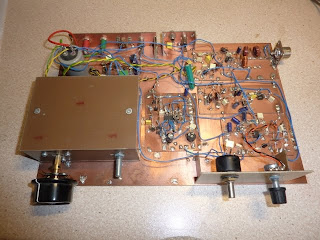
I made PCBs for all the main sub-systems in the rig and had my first QSO on the Funster PLUS with Stefan, DL4ST - he gave me a 579 report - not bad for a tangle of wires on the bench...

Finally - yesterday and today - I squeezed it all in some kind of enclosure (or, at least, half an enclosure - I still don't have a lid).
The "box" is made from single-sided copper clad F/G board, soldered together. I have two AF gain controls, main tuning, RIT and the keyer speed control on the front...

It doesn't matter what rig I try to plug into what antenna - I always have the wrong connector. So - this time - I put two antenna sockets on the back - a BNC and an SO239...

There are (right to left) 4mm power sockets, a single power connector (not yet fitted), a 3.5mm jack socket for a paddle and one for a straight key (not yet fitted), a 3.5mm socket for the output of the AF amplifier (for speakers or phones) and a phono socket for line-level AF out. Then the extravagant pair of antenna connections!
Looking from the side, you can see the stack of three PCBs (Tx at the bottom, then keyer/sidetone generator, then Rx on top) - at least you can see the top two! The Frequency Counter PCB lives atop the VFO box. The whole thing is almost impossible to put together - let's hope nothing breaks as it isn't designed for service!

Now we're all set for winter sports - and, as I look out of my shack window, I am pleased to say we certainly have enough snow HI HI.
...-.- de m0xpd







